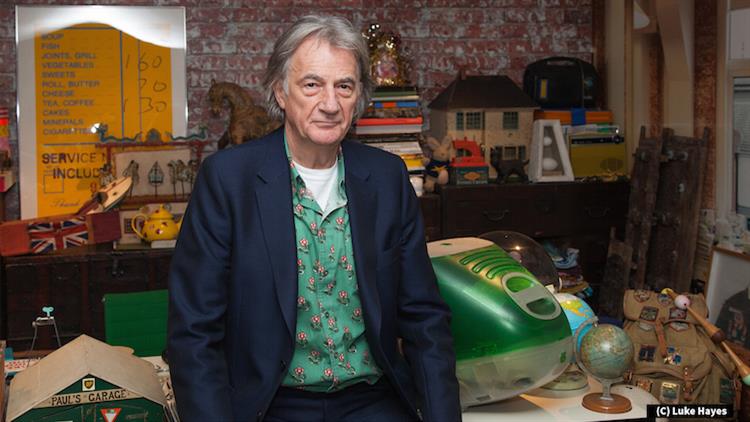Legendary British fashion designer Sir Paul Smith's touring exhibition – simply titled Hello, My Name is Paul Smith – has shown in cities from London and Los Angeles to Tokyo and Taipei, with almost half a million visitors so far, and now it's landed in Shanghai. The exhibit allows viewers to step into the world of the internationally acclaimed designer, with different rooms dedicated to different points in his career. Here, Smith explains the story behind the exciting exhibition.
Paul's Office
The show demonstrates how your career has grown from humble beginnings. How did it all start?
In the beginning, I didn’t want to be a designer; I wanted to be a professional cyclist. I left school at the age of 15 to pursue that career, but then at 17 I suffered a really big crash and ended up in hospital for three months. By chance, some people who were in the hospital with me at the time took me to a pub in London close to where all the art students hung out. And that’s where my life changed. I suddenly thought... Could I make a living from a creative job? My first job was as a sales assistant, helping one of the students start her own shop.
First Shop
Hello, My Name is Paul Smith features a mock-up of your first ever shop in 1970, a 3x3m space in Nottingham. What first inspired you to open up the store?
Well, through working in the shop for the other student, I was still keeping in touch with the art school, and that’s how in 1969 I met a young lady, and she was called Pauline. So it was Paul and Pauline – that was easy. We fell in love and she came to live with me, and in the evenings she taught me about being a designer because she’d studied Fashion Design at the Royal College of Art.
After three more years working in the shop, it was Pauline who said to me, ‘You have so much energy and your own ideas, why don’t you open your own shop?’ and so I did. None of this would have been possible without Pauline. I married her, eventually.
Inside Paul's Head
The exhibition delves into the design process behind your fashion, offering visitors the chance to explore your office and studios. How have you brought this idea to life around the world?
The thing I knew immediately is that I didn’t want the exhibition to be a retrospective. This was the main thing. For instance, I’ve been approached by so many people over the years to do a biography or an autobiography, but the only books I’ve ever done are one linked to this exhibition and one on cycling! So the idea to not do a retrospective was a big decision, but I immediately knew I wanted to have the exhibition like this, I didn’t even hesitate.
I just think, its really lovely as a young designer or just as a visitor to go to somewhere where everything is explained a bit more clearly, because I see loads of students at my exhibitions, so I’ve always tried to help young students and I wanted my show to be like that. It moves from my first shop, to my first show on the bed of the Paris hotel, to the section ‘inside Paul’s head’ with all the overlapping video screens in a small contained room, describing how I think about things.
That section came about because the curator Donna, said to me, ‘Well your ideas are so interesting, how on earth do you think of them, where do you get them from?’, and I said, 'Well, I don’t know really, they just pop into my head.' And so, she asked if we could somehow visualise that. A lot of it comes through photography and taking pictures, what I call my visual diary, so we wanted to be able to show that.
The Button Wall
The exhibition also features a collection of your most famous collaborations through the years, from Mini Cooper to Harley Davidson. What would you say are some of your own standout collaborations?
The collaborations are really interesting to me because after designing clothes for several years it's like a new challenge, you know working with plastic, you’re working with metal, and it just takes longer and the whole process is different. So that’s exciting. And then, when I was asked to design the Leica camera, that was really exciting because my father was an amateur photographer, so his dream was to one day own a Leica camera. So that fact that not only was I given one for designing it, but the fact that I was asked to do it was a real privilege.
If you’d like visitors to take one thing away from the exhibition, what would it be?
'I can do it.'
Most fashion exhibitions will have like, the dress from 1982, the dress from 1953 – and of course, my exhibition has clothes in – but the dream really was to have an exhibition that reflected more my character, which is very down to earth, and an exhibition that would encourage young people too. For example, young people can go in and see my first shop, and by seeing the first shop and realising how tiny it is, people might think ‘Gosh, if he can start from such a humble beginning, maybe I could do okay.’
At the end of the exhibition, there’s a big light with a print of a large note on a pink wall that says ‘every day is a new beginning’. The idea is to give encouragement to whoever it is, just go out and do things for yourself.
